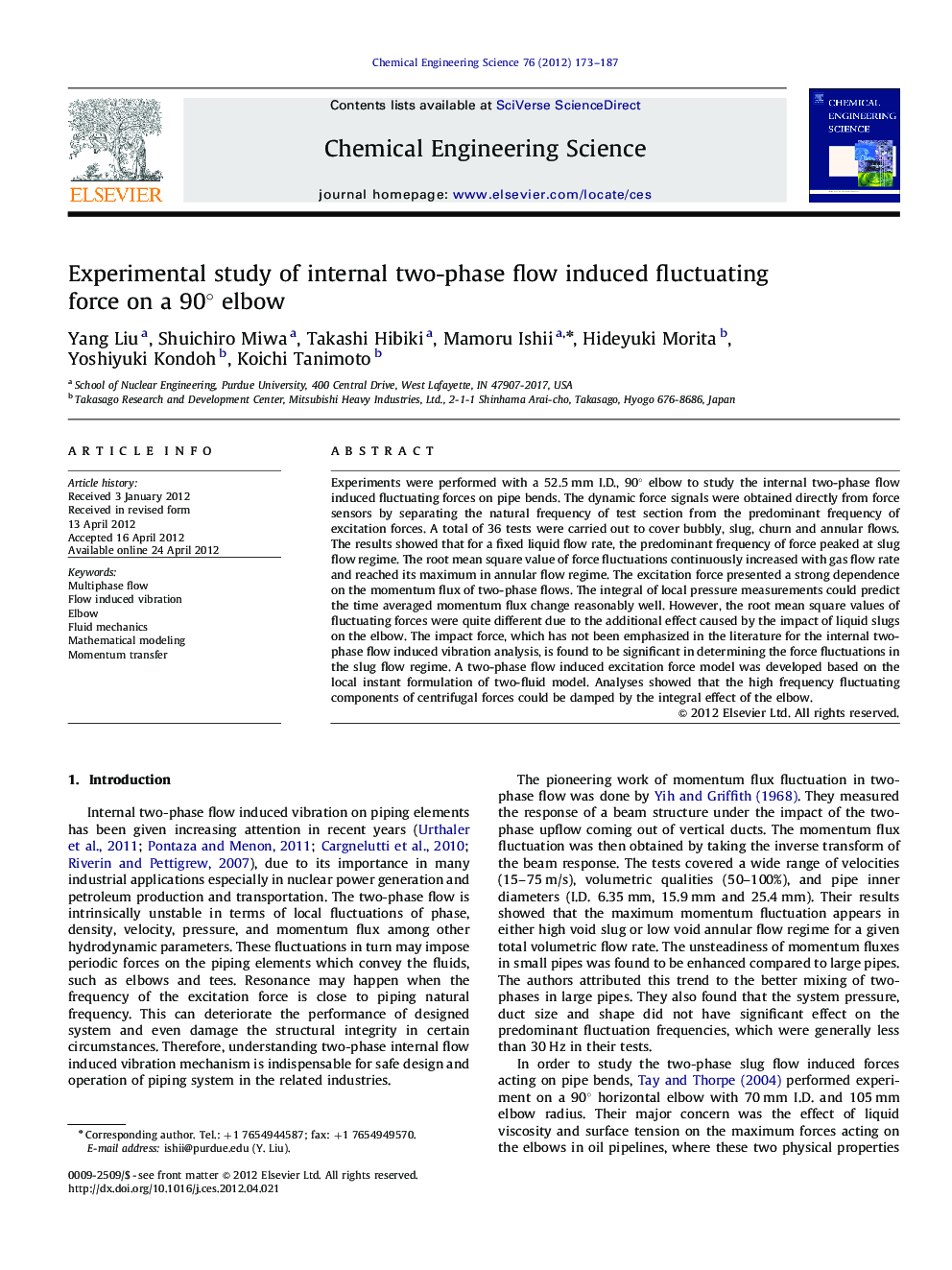| Article ID | Journal | Published Year | Pages | File Type |
|---|---|---|---|---|
| 155806 | Chemical Engineering Science | 2012 | 15 Pages |
Experiments were performed with a 52.5 mm I.D., 90° elbow to study the internal two-phase flow induced fluctuating forces on pipe bends. The dynamic force signals were obtained directly from force sensors by separating the natural frequency of test section from the predominant frequency of excitation forces. A total of 36 tests were carried out to cover bubbly, slug, churn and annular flows. The results showed that for a fixed liquid flow rate, the predominant frequency of force peaked at slug flow regime. The root mean square value of force fluctuations continuously increased with gas flow rate and reached its maximum in annular flow regime. The excitation force presented a strong dependence on the momentum flux of two-phase flows. The integral of local pressure measurements could predict the time averaged momentum flux change reasonably well. However, the root mean square values of fluctuating forces were quite different due to the additional effect caused by the impact of liquid slugs on the elbow. The impact force, which has not been emphasized in the literature for the internal two-phase flow induced vibration analysis, is found to be significant in determining the force fluctuations in the slug flow regime. A two-phase flow induced excitation force model was developed based on the local instant formulation of two-fluid model. Analyses showed that the high frequency fluctuating components of centrifugal forces could be damped by the integral effect of the elbow.
► Two-phase flow induced force on a pipe elbow is measured. ► Force reaches to the maximum right after transition from bubbly to slug flow. ► The elbow filters out high frequency components of force fluctuations. ► Impact effect is important to the magnitude of force fluctuations.
